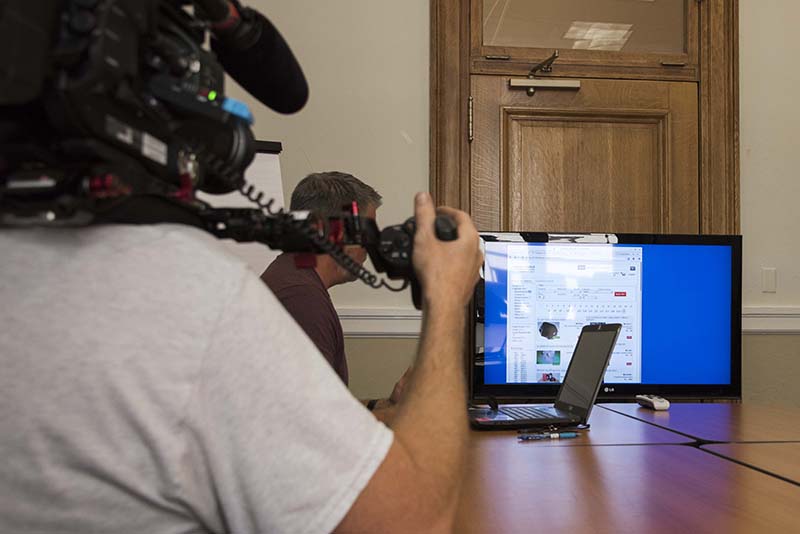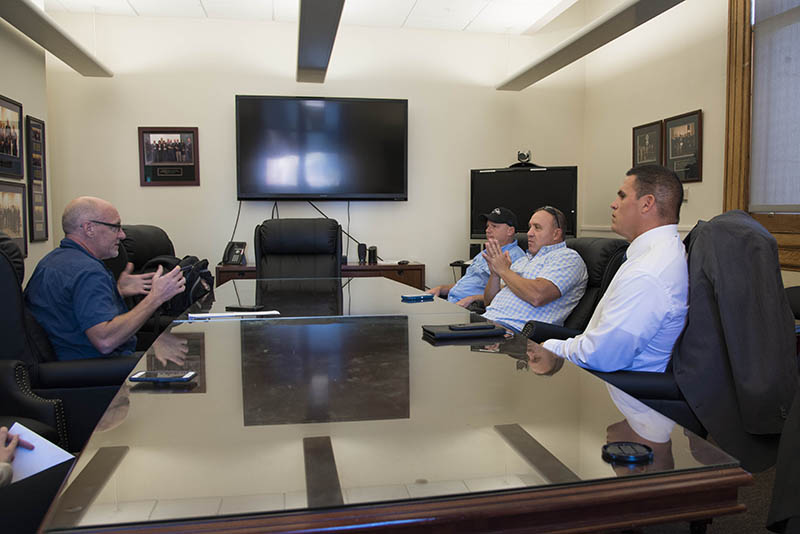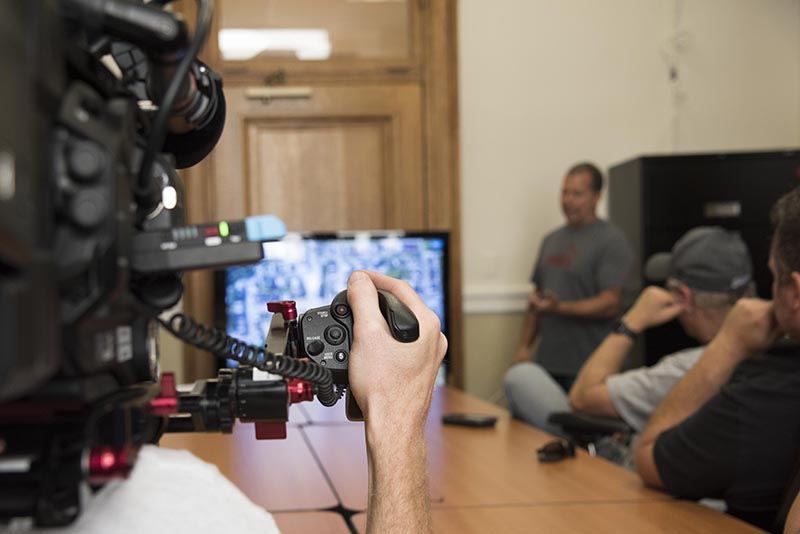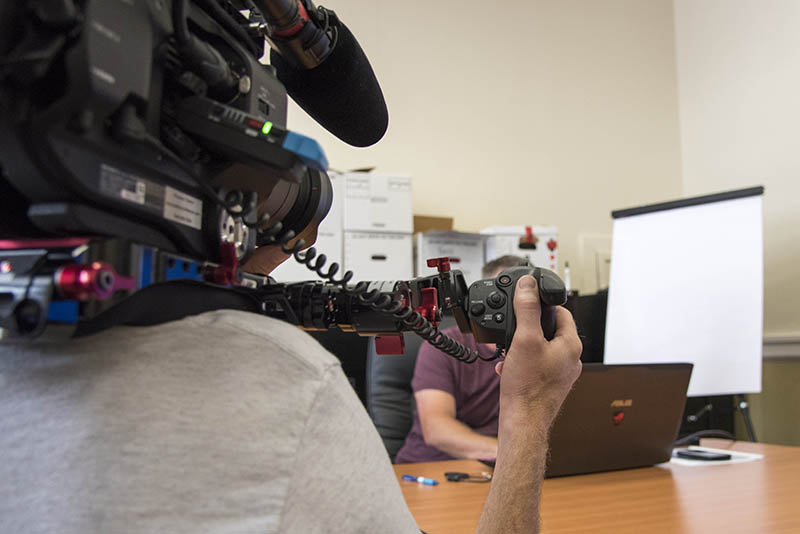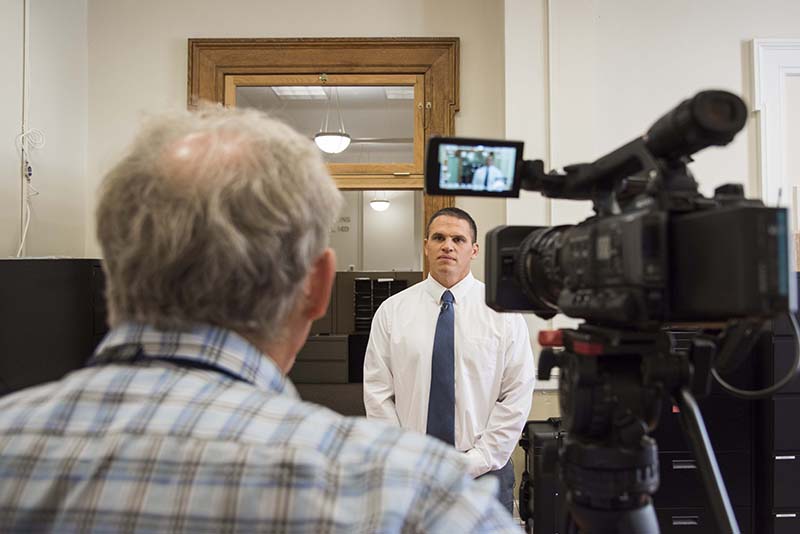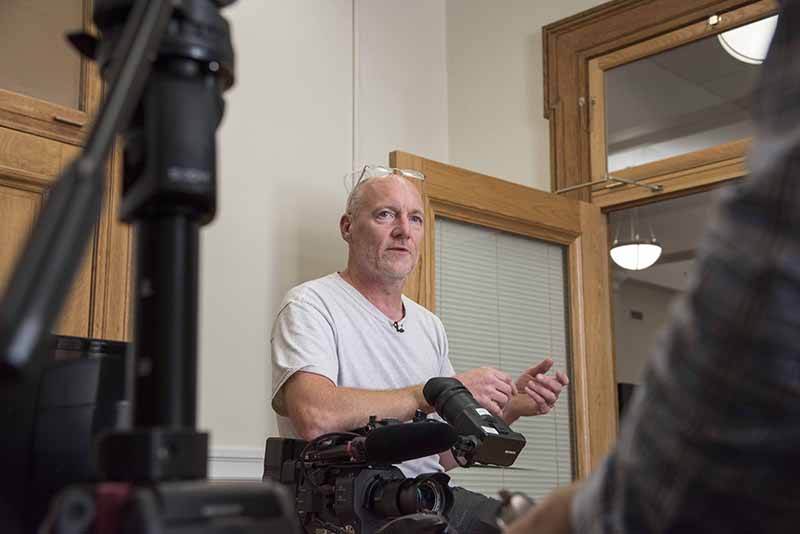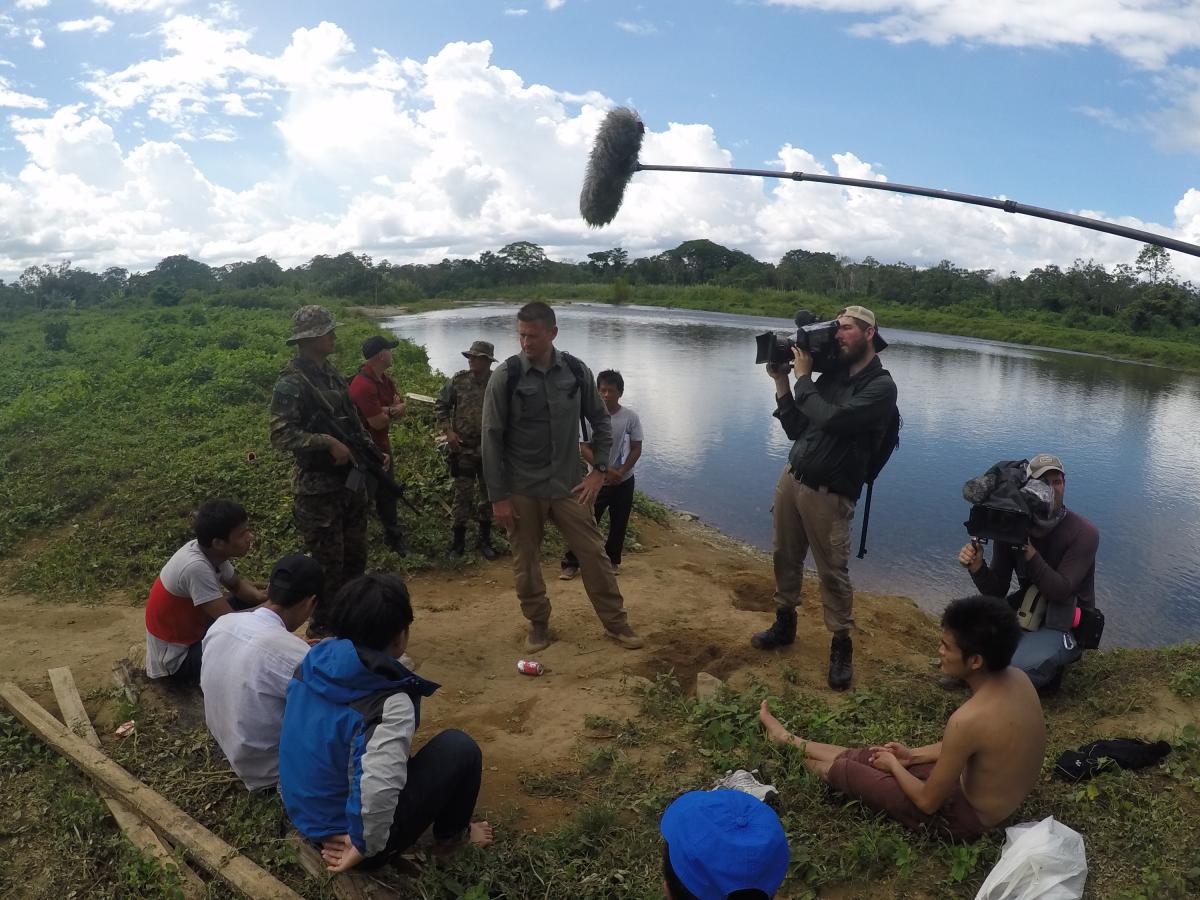It’s a Wednesday morning at U.S. Immigration and Customs Enforcement’s (ICE) Homeland Security Investigations (HSI) Baltimore field office. There’s a buzz in the air on this July day. Everyone can feel it. Plans are being finalized for “Operation Mr. Smith,” a major bust of a local darknet fentanyl operation later that afternoon.
In an upstairs conference room, HSI Baltimore Assistant Special Agent in Charge Adam Parks and Group Supervisor Christopher Yoder brief Kevin Leeser on the plans. Leeser, a freelance cameraman, is in town on behalf of Wall to Wall Media. He’ll be filming the operation for an upcoming documentary that highlights the war on drugs.
This story will be based on the totality of events following HSI Baltimore’s investigative findings of “Mr. Smith,” who is suspected of importing pharmaceutical equipment for the purposes of producing counterfeit pharmaceuticals laced with fentanyl for distribution. Following the initial investigation, HSI Baltimore identified an open-air fentanyl selling market located in the city. Sources had informed agents that this open-air drug market was making close to $30,000 a day is drug sales.
Based on the identification of several members of a street corner organization, HSI will assist Baltimore Police Department in identifying the leaders of this group and their source of supply for the fentanyl.
For this operation, Leeser is not just a cameraman – he’s part of the team. With more than 20 years of experience, Leeser has been on many law enforcement ride-alongs around the country. And while every city has its own personality, he takes his cues from the guys who have guns with them.
“They know what’s going on. I wear my vest, even if I’m on a golf course. If there are firearms in the car, I’m wearing a vest. I’ve learned a lot over the years about situational awareness,” Leeser said.
According to Parks, HSI Baltimore personnel always try to be as professional, thorough and efficient as possible, because with or without a camera crew on site, the mission would still be executed.
“It’s a very dangerous city and difficult place even for us in law enforcement,” said Parks. “You can never take enough steps to protect people. In an area like this, camera crews must be concerned with everything such as what lens are used because if someone sees you, they’re going to immediately get suspicious. You must be careful. In law enforcement, that’s what we deal with every day.”
Office of Television and Motion Pictures
For years, law enforcement agencies have been depicted on television sets and the big screen. From “COPS” to “Law and Order” to “CSI,” among others, the longevity of these shows reflect the public’s appetite for consuming law enforcement storylines.
At ICE, the Office of Television and Motion Pictures leads the effort to showcase the agency's work through multimedia and television productions that highlight the agency’s efforts to enforce the nation's immigration and customs laws. These include books, films, documentaries, docu-series and television series. These productions are typically for informational purposes and entertainment value. The projects take shape via long and short format documentary films or series, scripted shows that typically air broadcast and cable networks, on-line sources (Netflix, Hulu, Amazon Prime) and theatrical releases.
Lou Martinez serves as coordinator for the Office of ICE Television and Motion Pictures. Based in New York, the office has been around since the inception of the agency. ICE leadership empowers Martinez’s office to work on the development of all television and motion picture projects.
“Either I’m pitching a production company, or the company’s pitching me and inquiring about what they can or can’t do,” Martinez said. “You’re always going to have people in the entertainment industry who want to work with the agency to tell its story beyond just what you see on the news. They want a birds-eye view of how the agency operates, not just on immigration, but how we investigate crimes like drug smuggling and human trafficking.”
Martinez says his phone rings constantly with inquiries from producers and writers. Once he sees what they want to do and that they meet the multimedia criteria set by the U.S. Department of Homeland Security (DHS), a concurrence slip is sent to leadership at ICE headquarters. If DHS has approved the company, they must fill out a questionnaire before a decision is made on whether to move forward with a project.
Once production companies are approved and sign the multimedia agreement, planning begins. Martinez gets away from working with headquarters and starts working with the field offices to coordinate access, just as he did with Parks and the HSI Baltimore staff.
“People [in the field] like to see a reflection of what they do, because what they do is important and we just want to make sure that the final product tells that story,” Parks said. “Reality [television] for ICE is much better than scripted. We don’t fit the easy narrative of what the public wants ICE to be and it’s important to tell that story.”
With that, however, participation in multimedia documentary productions is entirely voluntary. ICE personnel may opt not to participate. The success of law enforcement work is ICE’s first priority; thus, the agency requires that no multimedia production impede an investigation or enforcement action or jeopardize the success of an operation or subsequent prosecution.
And even when being filmed, ICE personnel must abide by all laws, policies, procedures and training regardless of the presence of those involved in multimedia productions.
“I find the value in doing these projects,” Parks said. “Some of the hesitation [to participate] comes from a place of fear. I’m more hopeful that it will go right.”
Added Yoder: “If we don’t take the opportunity to tout what we do, nobody else is going to. We are the front line. I want people to see the problem, see how we attack it and solve it.”
There are three types of productions ICE is generally featured in: scripted, documentary and hybrid.
Wrapping Up
Once filming is complete, Leeser will take his footage, dump it on a hard drive and send it off to New York or Los Angeles where the production company will review.
“For me, I’ll think I’ve shot the coolest thing ever,” Leeser said. “Once I send it off, months will go by and eventually the show goes on the air, or I’ll be sent a DVD. I’ll look for the scenes I shot to make the final cut.”
The editing process is one of the primary concerns for all personnel who are involved in these motion pictures and televisions projects.
There are evidence issues, informants and other tactics and techniques that need to remain confidential.
“You always have to worry that if you don’t have strict control over the process, it can be made to fit a preexisting narrative and that happens in the editing process,” Parks said. “As long as it’s raw and it allows us to show who we are and what we do, I think that’s OK, but that’s always the concern.”
According to Martinez, 99 percent of the time he doesn’t hear from people who are doing scripted shows or movies “because they don’t want to sign a multimedia agreement. The agreement allows us to look at the script. We get to tell them, ‘hey that’s factually incorrect.’ In the scripted world they don’t have to be factually correct. It is fictional.”
Nonetheless, he continues to make himself available by attending conferences and introducing himself on behalf of ICE; however, the creative freedom for movies and television shows still lies within the production company’s authority.
“I get calls from people in the field or at headquarters who are unhappy with what happens on a show, I can call a showrunner or producer, but the majority don’t want to hear it,” Martinez said. “It’s what they want to do.”
Reflecting on the projects he’s worked on to date, Martinez cites “Hidden Idols” as one of the success stories. The 2015 documentary created by FiveThirtyEight and ESPN Films follows HSI Special Agent Brent Easter as he tracks the black-market sale of antiquities, tracing sacred artifacts stolen from a village in India to a store on Madison Avenue in New York City owned by Subhash Kapoor, described as one of the most prolific art smugglers in the world.
Viewership and ratings are a key measure for industry success, but for the ICE Office of Television and Motion Pictures the most important factor is seeing topics key to the mission of ICE on air. The office is committed to showcasing the agency's hard and dynamic work to keep the nation secure.
“I’m open to working with all offices across the country and around the world. I respect their concerns and never push anyone, but I know we have great cases and we should highlight who we are,” Martinez said. “ICE is getting a black eye now. More than ever we need to take on these projects that give us a voice which we don’t have in the mainstream news media right now.”
As HSI Baltimore and local law enforcement personnel meet to finalize the strategy for the operation, Leeser works the room getting the best footage for the upcoming documentary. The work of law enforcement must be done, and the story will be told.
Both will have a lasting impact.
“The success of the project will be if I’m at the grocery store and someone says ‘hey, I saw you guys on TV. That made me feel better to know that you are out there doing something about this,” Parks said. “We are going to do this work regardless, so to have this story told is a bonus.”

